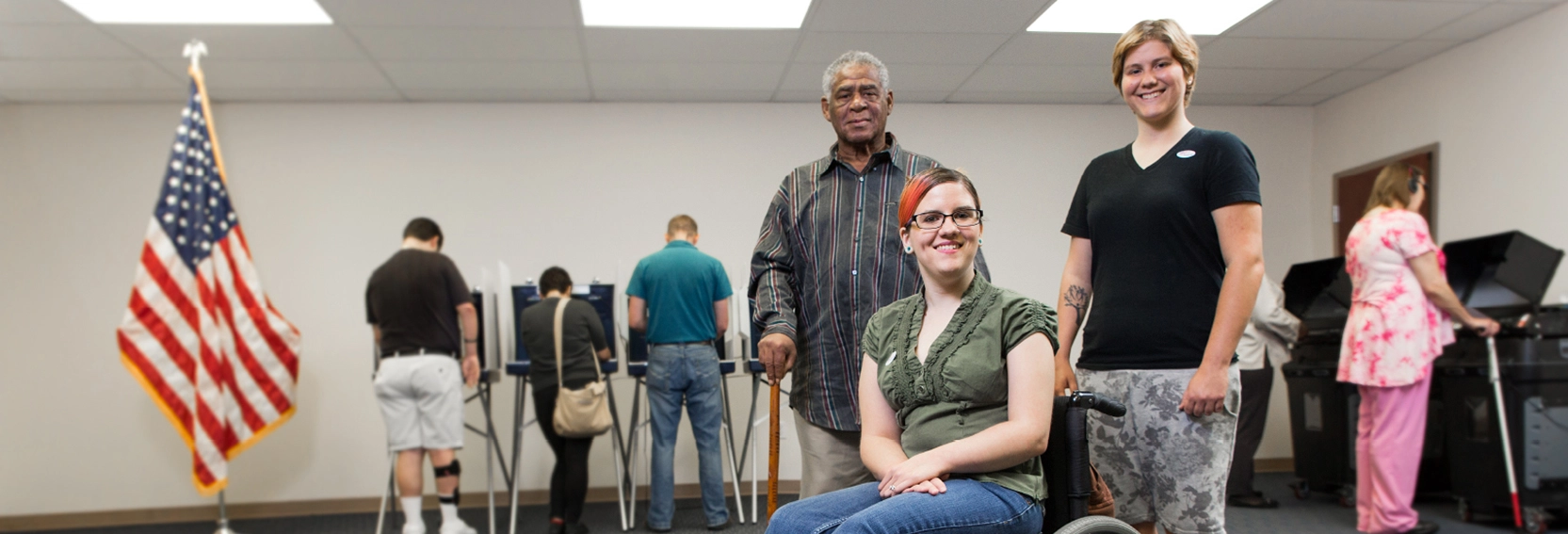Before even getting to the ballot box voters with disabilities frequently experience problems accessing information about candidates and where they stand on positions that are important to them. In a 2012 Voter Experience questionnaire created by the National Council on Disability, 20% of the 900 voters with disabilities who completed the survey stated that they obtained election information using the Internet to:
- research voting laws and requirements
- download sample ballots
- find polling sites and hours of operation
- research candidates
- and access other electoral process information.
They also were exposed to public service announcements (PSAs) and other media, including print, radio, television, and social media such as Facebook. However, many of these sources of information remain inaccessible to voters with disabilities.
The Issue
As technology has improved and internet access has increased, our access to information has increased as well. There are political ads on social media, podcasts, YouTube, and Pandora. News headlines can be accessed 24/7 through websites and cable news channels. People receive constant e-mails and texts on smartphones. It often feels like we are flooded with information. For some people with disabilities, all of this information remains inaccessible:
- Press conferences and public service announcements don’t provide American Sign Language (ASL) interpreters or closed captioning.
- Websites lack captions and alt-text for images.
- Flashy graphics make websites difficult for people using screen readers to navigate.
- Educational materials aren’t provided in alternative materials such as large print or braille.
- Campaign and public events are held in inaccessible locations.
All of these issues create barriers for voters with disabilities trying to access information.
Why it Matters
The Miami Lighthouse for the Blind reviewed the websites of all the presidential candidates for the upcoming 2020 election and found that not a single candidate’s website was fully accessible for voters who are blind or have visual impairments. It’s not just websites that are inaccessible to voters with disabilities though. Candidate forums are often held in crowded rooms that may not provide adequate space for wheelchair users, or those who use other mobility equipment. American Sign Language (ASL) interpreters are rarely provided for attendees who are deaf. When voters with disabilities can’t access information about candidates and their positions, or feel that candidates don’t care enough to make their campaigns inclusive, it creates voter apathy and discourages voters with disabilities from voting.
Take Action for Change
If voters with disabilities voted at the same rate as those without disabilities, the disability community would make up the largest minority voting bloc in the U.S. If candidates want people with disabilities to vote, not only do they need to ensure that the voting process is accessible, but they need to ensure that their campaigns are accessible as well.
Rallies and candidate forums should be:
- Held in accessible locations
- Include ASL interpreters
- Use sound systems for those who are hearing impaired
- Develop websites that are accessible
- Offer campaign materials in alternate formats
Candidates should also address issues important to voters with disabilities in their campaign platforms.
